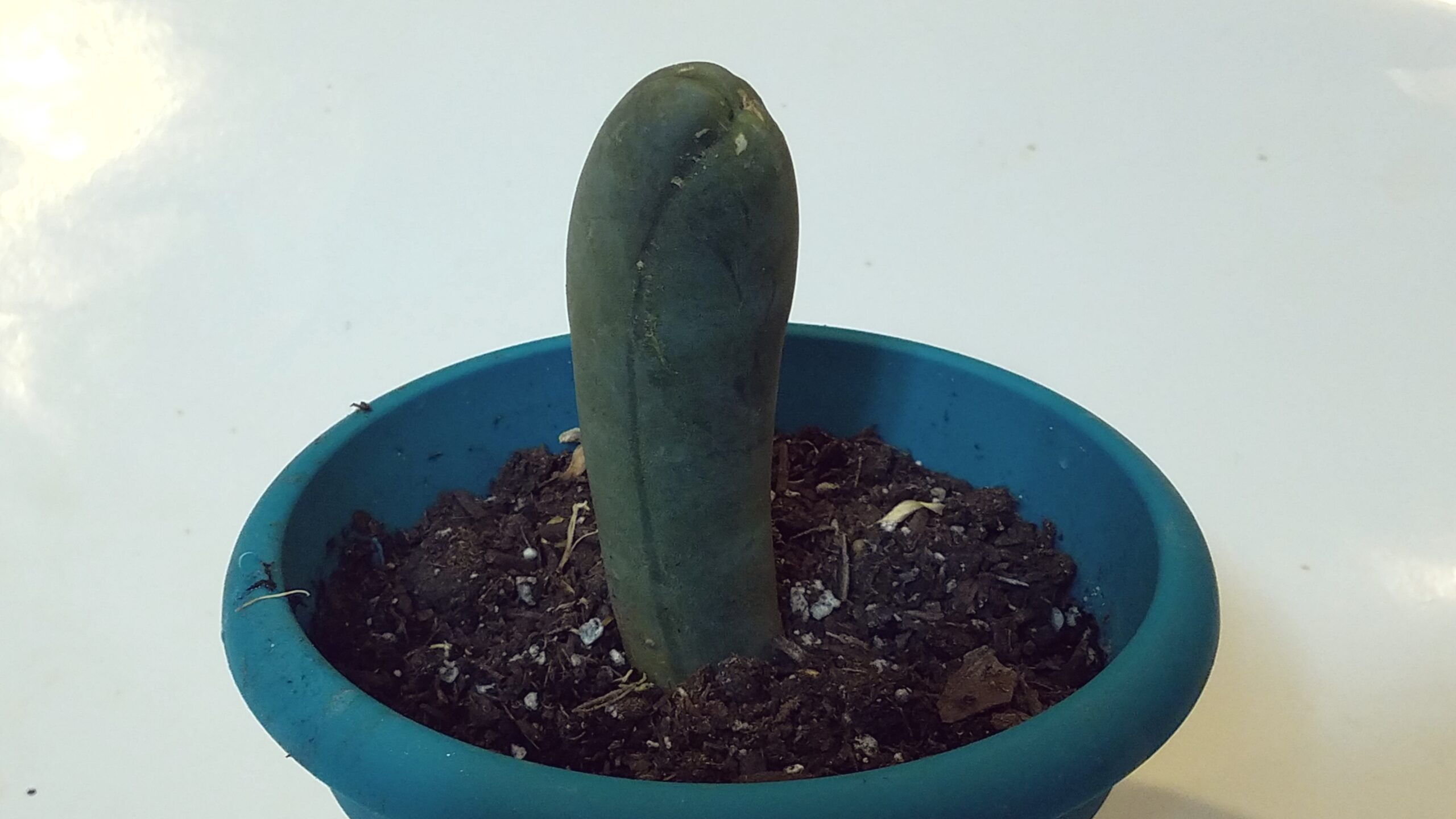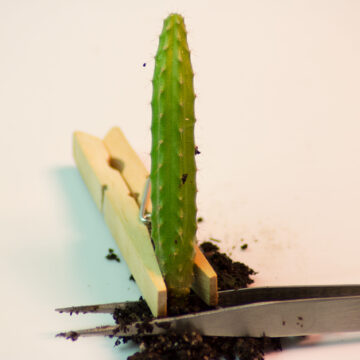Description
Trichocereus Bridgesii mostruosa or “Monstrose” is a rare mutated form of the typical Bolivian columnar cactus. It has been termed the “Penis Plant” for obvious reasons. This is the TYPE A clone aka the LONG-joined type. It produces longer offsets or “pups” in comparison to the short-jointed clone. But it pups less frequently, so this makes it considerably rarer. It is quite difficult to find these for sale. We do also offer the short-jointed plants as well. It should be noted that there is a mixup with regards to the identity as type A or type B, depending on who you ask. So it is best to refer to them as Short-jointed or Long-jointed clones. We only have a very limited amount of these. They are nice size, thick rooted tips. Plants will ship bare root to save on shipping costs.
Trichocereus bridgesii, also classified as Echinopsis lageniformis, is a bluish-green columnar cactus native to Bolivia, which is also where these seeds are from. It resembles the more common San Pedro cactus (trichocereus pachanoi) but typically has fewer, wider ribs and longer spines. In fact, many references to San Pedro in Bolivia are believed to actually be referring to bridgesii rather than pachanoi. This cactus has gained much popularity among cactus collectors in recent years. Like pachanoi, it has huge, white blooms that make it an attractive andscaping cactus. It grows a little bit slower than pachanoi but is still a rapid grower, making it one of several trichocereus species that work well as a grafting stock for slower-growing cacti such as astrophytum and ariocarpus. It can reach fifteen feet in height and tends to produce offsets rather easily. Trichocereus bridgesii is also easy to grow from seed, but its seedlings are more prone to turning purple than many other trichocereus species when exposed to sunlight. When this occurs, be sure to reduce their exposure. It is hardy to about 30 degrees Fahrenheit and should only be watered during active growth when the soil has dried out. During the winter in areas where temperatures are too cold, plants should be brought inside where they will go dormant (stop growing). Prior to entering dormancy (late September-early October), watering should be slowly reduced until it reaches none. Plants should be brought indoors and stored in a cool, dry, dark place. Since it is not growiing, it does not require any of these essentials. When breaking dormancy, a reverse process can be applied. This will ensure nice, even growth to your cacti and reduce the chance of infection due to overwatering when the cactus’s immune system is at rest.
SORRY, NO INTERNATIONAL SHIPPING ON LIVE PLANTS.
**Buyer is responsible for frozen plants. USPS is heated, so the plant will be fine unless you leave it at your door too long. But if you are in a cold area and cannot get the plant right away, signature confirmation can be added to the shipping cost. They will hold the plant until you pick it up.






